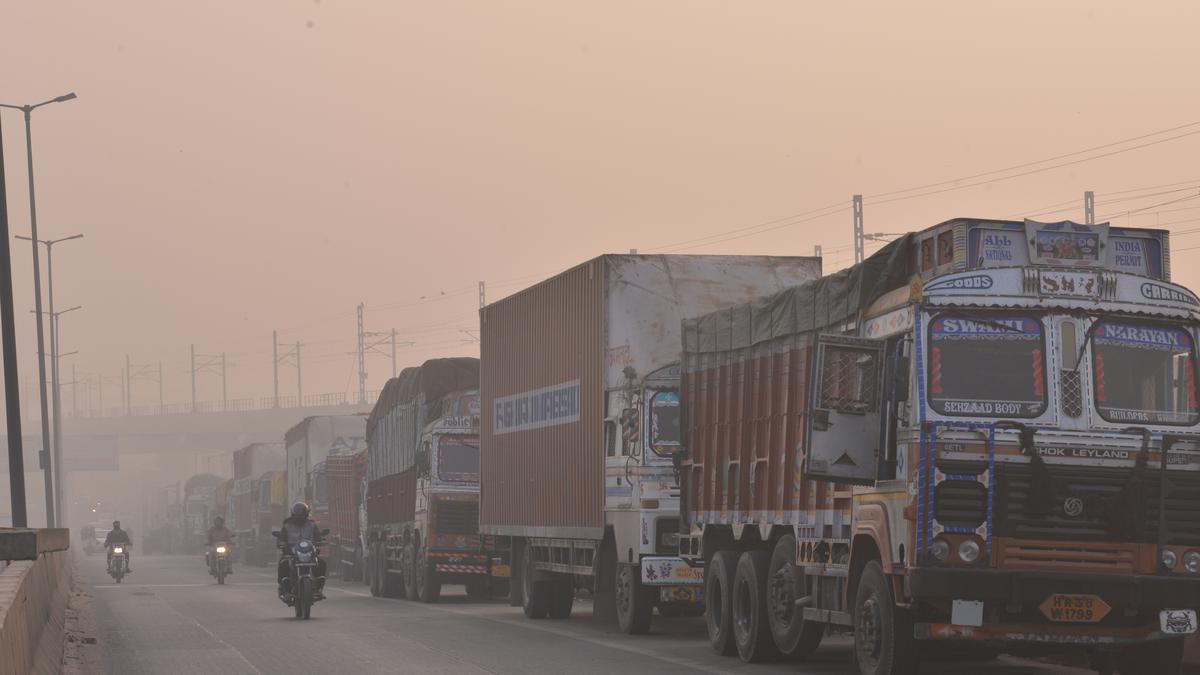
Anirudh Bhuwalka is slamming on the accelerator as he seeks to steer far ahead of the competition. His company, Blue Energy, has 350trucks running on LNG (liquefied natural gas) and plans to have 3,000 more on highways in the coming year. Bhuwalka, who says he was the first to have long-distance LNG trucks on the road, won a contract to supply Concor (Container Corp of India) with 100 orries last year.
Ashok Leyland, the giant bus-and-truck company, has also had its LNG trucks on the road since September. And Tata Cummins, which has just opened a new Jamshedpur plant tomake hydrogen-powered internal combustion engines for heavy-and-medium trucks, alsois road-testing LNG trucks.
The trucking industry has come late tothe game but it’s looking to swiftly go green. “We need to decarbonise the trucking industry to help move the pollution needle,” says Bhuwalka. The lighter trucks will be electric-powered vehicles. For long-distance vehicles the fuel of choice could be either LNG or hydrogen.
LNG: FOR THE LONG HAUL
Why LNG for the longer-haul? The answer is easy: LNG-powered trucks can run for much longer distances 1,200-1,400km. Electric vehicles (EVs) have a much shorter range. So EVs would be good for carrying cargo from Mumbai to Pune. But Mumbai-Delhi would be better done with an LNG vehicle.
There are good reasons why the trucking industry has been slow to move togreener alternatives. This is a B-to-B business and customers keep their eyes onthe bottomline sothe cheapest options win. Diesel-powered trucks are considerably less expensive than any of the newer fuels. By contrast, EV buses, which are running with half-a-dozen state transport corporations, get large subsidies to keep them on the roads.
Says Bhuwalka: “A truck’s a B-to-B business. It’s very nice to have boardroom conversations on going green. But nobody will give you one cent more to go green.” An LNG truck costs double the price of diesel and hydrogen-powered vehicles are likely to cost the same. By contrast, diesel vehicles are likely to start from slightly over Rs.30 lakh.
A chicken-and-egg situation has also Trucking industry looking to go “green” .Accounting for about 30% of vehicular pollution, the trucking industry’s slowed the journey of long-distance trucks. There are now 13 LNG filling stations countrywide which isn’t many but there are more on their way, especially in south India. Bhuwalka says one of his trucks can dothe Mumbai-Delhi trip by stopping at two or three stations. “We’ve been the catalyst in making this market grow. If you put up one more gas station, I will put more trucks onthe road. You’ll really see this market break out inthe next 24 months. It’ll be very quick.” Filling an LNG truck takes an hour.
Tata Motors, by contrast, is more cautious. It says their LNG vehicles are ready but the market needs to develop. “The market will evolve as the LNG-powered trucks can run for much longer distances 1,200-1,400 km. Electric vehicles have a much shorter range. infrastructure evolves and more customers see value in these vehicles,” says a spokesperson.
Blue Energy, by contrast, already has a 1,000-truck order worth around Rs.850 crore from GreenLine, a new logistics business player. GreenLine’s partly owned by Exponentia Ventures, a Dubai-based fund run by Anshuman Ruia, one of the younger Ruias. Exponentia has a portfolio investment in Blue Energy. The trucking company also has a partnership with Iveco which has takena stake in it and is providing the engines for Blue Energy’s trucks.
LNG is already a tried-and-tested fuel for trucks elsewhere globally. China is thought to have around 7-lakh LNG trucks on its roads, there are 50,000 in Europe and it’s safe to say LNG will become a key fuel in the Indian long-haul market.
HYDROGEN OPTION
Both Tata Motors and Ashok Leyland have been conducting intense R&D on hydrogen-based H2ICE engines. These engines have conventional diesel powertrains powered by hydrogen.
But the greatest challenge here is not about production of the engine or the vehicle. It’s about having ready access to hydrogen as a fuel and having it available at pumps.
An even greater issue is the green hydrogen production.
The fact is everyone’s waiting and hoping the government will offer the trucking industry sufficient subsidies to cut customer costs. Turning the trucking industry green is vital because it accounts for around 30 per cent of vehicular pollution.
If significant subsidies are on offer, the industry could go green at high speed and Bhuwalka very much hopes Blue Energy could be the proverbial early bird that catches the worm. “My personal experience is first-mover advantage catalyses into much more exponential growth than for later entrants,” he says.
